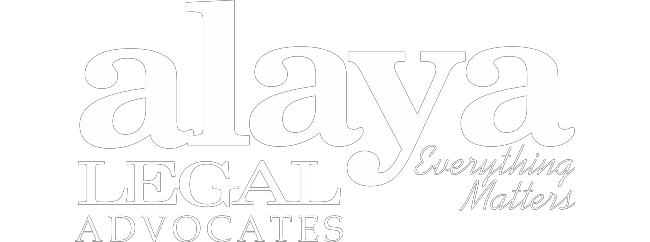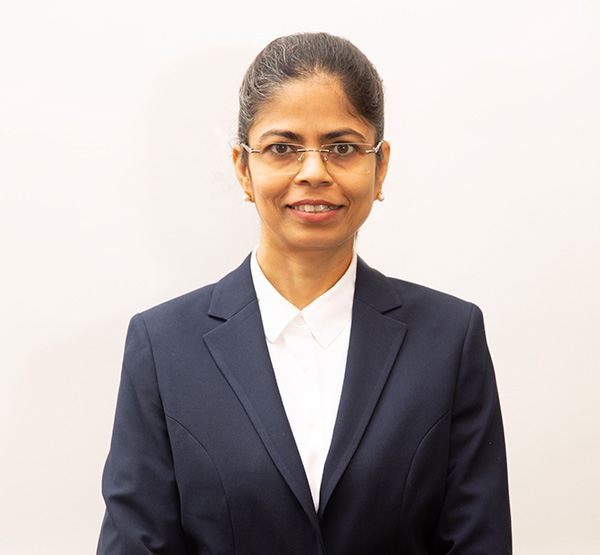| Date | Version | December 27, 2022| 3.0 |
| Keywords | ‘AERA’, ‘Tariff’, ‘Light Touch Approach’, ‘Price Cap Approach’ ‘Into Plane Services’. |
| Related Legislation = |
|
| Jurisdiction | Republic of India |
Abstract: The Airports Economic Regulation Authority of India (‘AERA’) established under The Airports Economic Regulation Authority of India Act, 2008 (‘AERA Act’) is a regulatory body set up among other things to regulate tariffs and other charges for ‘aeronautical services’ rendered at airports. This write-up seeks to take a closer look at the outcome of the exercise of powers of the AERA in respect of tariff determination for ITP services rendered at airports.
Traditionally, airport operators conducted their operations under public ownership, considered the most potent form of regulation. However, over time, airports across the globe have been privatized, either fully or partially. With the transition of ownership from the public to the private sector, economic regulation of airport services assumes a crucial role in protecting the interest of airport users.
The AERA Act applies to all ‘airports’ where air transportation services are operated or intended to be operated except airports or airfields of Armed forces or paramilitary forces of the Union.
It is relevant to examine how private players and the AERA interact and the principles used by the AERA to set tariffs.
One of the functions of the AERA listed under the AERA Act is to ‘determine tariff for aeronautical services’ in respect of ‘major airports’ [1], taking into consideration one or more of the following factors:
(i) The capital expenditure incurred and timely investment in the improvement of airport facilities,
(ii) The service provided, its quality and other relevant factors,
(iii) The cost of improving efficiency,
(iv) Economic and viable operation of major airports,
(v) Revenue received from services other than aeronautical services,
(vi) Concession offered by the central government in any agreement or memorandum of understanding or otherwise,
(vii) Any other factor which may be relevant for the purposes of the AERA Act.[2]
The AERA Act requires the AERA to determine the tariff once in 5 years with the ability for interim correction.
In the process of discharging its function of tariff determination, the AERA has to ensure that:
(i) Its actions are not against the interest of sovereignty and integrity of India, security of the State, friendly relations with foreign States, public order, decency or morality.[3]
(ii) It maintains transparency by using methods including, consultation with stakeholders, allowing submissions by stakeholders, and explaining and documenting all decisions of the authority.[4]
Arguably, the provisions of the AERA Act allow unbridled discretion in determining tariffs for aeronautical services, which may serve as a deterrent to the private players entering the sector.
This write-up takes a closer look at tariff determination by the AERA for into-plane(‘ITP’) services, i.e., aircraft fuelling, de-fuelling and associated activities.
Approaches to Tariff Determination
Following power vested under Sec. 15 of the AERA Act, the AERA issued ‘Airports Economic Regulatory Authority of India (Terms and Conditions for Determination of Tariff for Services Provided for Cargo Facility, Ground Handling, and Supply of Fuel to the Aircraft) Guidelines, 2011’ (‘AERA Guidelines 2011’).
Under the AERA Guidelines 2011, the AERA may follow the ‘light touch’ approach or the ‘price cap’ approach for tariff determination, depending on its finding according to the three-stage approach[5]:
Stage One: Materiality
Stage Two: Competition and Reasonableness of Competition. Only after the service is deemed to be ‘material’ does the test of competitiveness come into play.[6]
Stage Three: Assurance of Reasonableness of User Agreements. In the event the service is deemed ‘material and not competitive’, the test of reasonableness of the user agreement is employed.
A light touch approach applies to all permutations and combinations while following the three-stage criteria except where the aeronautical service is deemed to be ‘material and non-competitive’ and where the AERA is not assured of the reasonableness of the existing User Agreement,[7] in which case, the price cap approach as opposed to light touch approach applies. Where the price cap approach is involved, the AERA is first required to determine the ‘Aggregate Revenue Requirement’ in respect of the into-plane services.[8] Determination of ‘Aggregate Revenue Requirement’ by the AERA poses its challenges.
The test of ‘materiality’ is objective, which is linked to a percentage of fuel throughput at the relevant major airport in relation to the total fuel throughput at all major airports. Thus, there is no difficulty in determining ‘materiality’.
Criteria applicable at Stage Two and Stage Three merit closer scrutiny.
Competition Assessment
Clause 5 of the AERA Guidelines 2011 sets out the requirements for assessment of ‘Competition’. The service is deemed to be ‘competitive’ if two or more providers are providing the same. However, there is a proviso that states:
‘that the Authority may in its discretion consider such other additional evidence regarding reasonableness of competition, as it may deem fit.[9]’
The following instances illustrate how the preceding exception has been put into practice:
- ITP services provided by IndianOil Skytanking Private Limited (‘IOSPL’), a joint venture company of IndianOil Corporation Limited (‘IndianOil’) and Skytanking Holdings GmbH, Germany[10]: IOSPL formed a Special Purpose Vehicle, IndianOil Skytanking Delhi Private Limited (‘IOSDPL’), a wholly owned subsidiary of IOSPL to conduct its operations at the Indira Gandhi International Airport.
IOSDPL commenced its operations at the Indira Gandhi International Airport in furtherance of a concession agreement awarded by Delhi International Airport Limited (‘DIAL’). The light touch approach was employed for the first two Control Periods[11], implying that the test for ‘competition’ had been satisfied since there were other ITP suppliers selected by DIAL based on a competitive tender process.[12]
However, for determining tariff for the third Control Period, the AERA argued that the ITP services providers had been providing the services to the promoter Oil Marketing Company only and not directly to the airlines; therefore, there is no competition in the true sense.[13]
The AERA failed to appreciate that the ITP service providers, in no way, restricted the airlines from entering into a direct contract with the ITP service providers. The airlines always had a choice to decide upon the contracting party for the ITP services, which choice may be dictated by preference or any other commercial reasons that may not be known to the ITP service provider. Further, the airlines are at liberty to choose any fuel supplier, thus, ensuring that the ATF rates remain competitive.
The AERA held the user agreement to be ‘non-competitive’, and proceeded to apply the test of ‘reasonableness’.
- AERA extended the foregoing reasoning to the user agreement to justify the price cap approach for determining infrastructure charges for the ITP Service Provider at the Chhatrapati Shivaji Maharaj International Airport, Mumbai, “the Authority noted that MAFFFPL was set up essentially to provide common access to all suppliers of fuel and remains a monopoly provider of the infrastructure of fuel supply. Hence, the Authority has decided to determine tariff for fuel supply service provided by MAFFFPL at CSIA under price cap regulation for the second control period.” [14]
Arguably, the language ‘reasonableness of competition’ used in the AERA Guidelines 2011 allows the AERA to apply subjective tests for determining the adequacy of competition without regard to the business reality.
From the perspective of the ITP service provider;
- The ITP service provider was selected through a rigorous tendering process.
- The ITP service provider has no privity of contract with the airlines for reasons beyond its control.
- The ITP service provider is in no position to enhance the number of ATF suppliers at the airport to enable ‘reasonable’ competition.
- As long as the ITP service provider executes the agreement with the ATF suppliers in compliance with applicable law, including laws concerning related party transactions, where applicable, the ITP service provider should not have to suffer on account of the ATF supplier holding a stake in the ITP service provider.
Separation of management among related parties for ‘perfect’ competition could be a goal under the competition law- in a situation where the ATF supplier has a stake in the fuel farm operator and also in the ITP service provider, and applicable law is complied with, imposition of additional criteria for ascertaining competition may be seen as stretching the discretionary power vested with the AERA.
Reasonableness of User Agreements
Clause 6 of the AERA Guidelines 2011 sets out the requirements for ascertaining the ‘reasonableness’ of User Agreements. A User Agreement is considered reasonable if the service provider submits the User Agreement with all the Users of the Regulated Service, with a clear indication of the agreed-upon tariff between the parties. There should be no objections raised by the Users of the Regulated Service that have not been appropriately addressed.[15] However, there is a similar proviso like the one in Clause 5 of the AERA Guidelines 2011, which states:
‘that the Authority may in its discretion consider such other additional evidence regarding reasonableness of User Agreement(s), as it may deem fit.’ [16]
The following instances illustrate how the preceding exception has been put to practice:
- In the case of IOSDPL, after stating that the Regulated Service did not meet the competition assessment criteria, the AERA held that while determining the ‘Reasonableness’, under clause 6, “all the users” of Regulated Service shall be extended to include the airlines that are availing the ITP Services through the Oil Marketing Companies as well[17], despite there being no direct User Agreement between the airlines and IOSDPL.
The Actual Capital Expenditure of the Service Provider, being less than the Projected Capital Expenditure, was also considered to be one of the factors for determining tariffs under the Price Cap Approach.[18]
IOSDPL even submitted that the contractual agreements it has had with the counterparties had been agreed upon since the commencement of the first Control Period, and that light touch approach to determine tariffs was adopted earlier. - The submissions of the AERA with respect to light touch approach being applied to the Bangalore International Airport Ltd are noteworthy.[19] The AERA stated that the tests of materiality, competitiveness and reasonableness should all be cleared successfully for adopting a light touch approach. The Telecom Disputes Settlement and Appellate Tribunal accepted the submission and did not look into the multiple stages set out under the AERA Guidelines 2011.[20]
The Tribunal stated that Sec. 13 of the AERA Act authorizes the AERA to determine tariff for such services.[21]
From the perspective of the ITP service provider:
- The User Agreements entered into by the airlines, and the supplying Oil Marketing Companies are confidential to the party.
- Since the ITP service provider has no privity of contract with the Airlines, the view adopted by the AERA that the airlines shall also be covered under the User Agreement cannot be accommodated.
- The User Agreements had been in place with the Oil Marketing Company for the first Control Period as well, where this issue had not been highlighted and a light touch approach was employed.
The inconsistent and arbitrary use of discretionary power has led to issues that may deter entry into this sector. Once the AERA decides to use the price cap approach, a new window opens – AERA has discretionary powers for adopting various values that help determine the Aggregate Revenue Requirement and Yield Per Unit.
Issues with Price Cap Approach
Clause 8.2 of the AERA Guidelines 2011 lists out the Regulatory Building Block components that need to be considered for determining the Aggregate Revenue Requirement:
“8.2.1. Fair Rate of Return applied to the Regulatory Asset Base
8.2.2. Operation and Maintenance Expenditure
8.2.3. Depreciation
8.2.4. Taxation
8.2.5. Revenues from services other than Regulated Service(s).”[22]
Clause 9 of the AERA Guidelines 2011 provides a detailed procedure for determining the Regulatory Building Blocks. Under this clause, determining a Fair Rate of Return involves using the weighted average cost of capital for a service provider. The same requires the calculation of Cost of Equity which is determined ‘subject to the consideration of such factors as the Authority may deem fit.’ Similarly, other figures and numbers are used by the AERA that involve determination based on forecasts, projections and estimates for factors such as Cost of Debt and Regulatory Asset Base.[23] This issue of the AERA using its discretion in determining these values for tariff determination was highlighted by the TDSAT as well.[24]
The TDSAT looked into the methods employed by the AERA to calculate the weighted average cost of capital in respect of tariff determination at DIAL, which involved adopting a value of 16% on the return on equity. The Tribunal stated that the adoption of 16% was based on a hunch and not on scientific and objective calculation or analysis. The Tribunal held that while adopting such values, “it is the duty of the regulator to scientifically and objectively ascertain how much is enough” [25] The Tribunal went on to hold that the estimation shall take place through a scientific and objective calculation or analysis.
On the other hand, a light touch approach involves consultation with all stakeholders that are documented. This approach involves the summary of concerns raised by the stakeholders, remedial actions taken to resolve these concerns and reasons for not addressing these concerns as well. The procedure also involves consideration of these tariff proposals by the AERA and grants power to seek additional information, conduct more stakeholder consultations analyse the tariff proposals. This ensures that all the views of the stakeholders have been accounted for and tariff is determined by incorporating the interests and concerns of all the stakeholders.
Viewpoint
- Determination of tariff is a function undertaken by the AERA under Sec. 13 of the AERA Act. The AERA Act and the AERA Guidelines 2011 vest the AERA with discretionary powers that may be invoked during determining tariff for aeronautical services being provided at the airports. While these powers are necessary for the effective discharge of its functions and also to safeguard the interests of the airport users, such power should be exercised judiciously. The grant of discretionary powers to an authority does not mean unfettered discretion.
- While assessing competition, the AERA shall also take into account the dynamics of the industry and the fact that there are bound to be fewer private players entering such a capital-intensive sector. Excessive use of discretionary power may defeat the objectives of fostering healthy competition and encouraging investment in airport facilities.
- While assessing the reasonableness of the User Agreements, the AERA has arguably stretched its power by holding that even airlines, that do not have a direct agreement with the service provider, should be included as ‘users’ of the Regulated Service.
- The AERA Guidelines 2011 facilitate using a light touch approach as opposed to a price cap approach. The AERA seems to be exercising its discretion intending to apply the price cap approach in most cases – such an approach may be seen as contrary to legislative intent.
- Employing a price cap approach opens the door for the AERA to consider factors and assign them values at its discretion. Such discretionary powers signify uncertainty and risk, disincentivizing private players from entering this sector. Such deterrence is also likely to adversely affect the AERA objective of fostering healthy competition.
[2] Sec. 13(1), The Airports Economic Regulatory Authority of India Act, 2008.
[3] Sec. 13(3), The Airports Economic Regulatory Authority of India Act, 2008.
[4] Sec. 13(4), The Airports Economic Regulatory Authority of India Act, 2008.
[5] Cl. 3, The Airports Economic Regulatory Authority of India (Terms and Conditions for Determination of Tariff for Services Provided for Cargo Facility, Ground Handling and Supply of Fuel to the Aircraft) Guidelines, 2011.
[6] Cl. 4, The Airports Economic Regulatory Authority of India (Terms and Conditions for Determination of Tariff for Services Provided for Cargo Facility, Ground Handling and Supply of Fuel to the Aircraft) Guidelines, 2011.
[7] Cl.3.2(iv), The Airports Economic Regulatory Authority of India (Terms and Conditions for Determination of Tariff for Services Provided for Cargo Facility, Ground Handling and Supply of Fuel to the Aircraft) Guidelines, 2011.
[8] Cl. 8, The Airports Economic Regulatory Authority of India (Terms and Conditions for Determination of Tariff for Services Provided for Cargo Facility, Ground Handling and Supply of Fuel to the Aircraft) Guidelines, 2011.
[9] Cl. 5.1, The Airports Economic Regulatory Authority of India (Terms and Conditions for Determination of Tariff for Services Provided for Cargo Facility, Ground Handling and Supply of Fuel to the Aircraft) Guidelines, 2011.
[10] Order No. 03/2022-23 dated May 25, 2022, “In the Matter of Determination of Aeronautical Tariff for M/s Indian Oil Skytanking Delhi Private Limited (IOSDPL) Providing Into Plane Services (ITP) At Indira Gandi International Airport (IGIA), Delhi for the Third Control Period” (AERA/200010/MYTP/IOSDPL/ITP/DELHI/CP-III/2021-26. (‘IOSDPL Order’).
[11] Para 1.2.2, ‘IOSDPL Order’.
[12] Para 2.3.4(b) ‘IOSDPL Order’.
[13] Para 2.2.7, ‘IOSDPL Order’.
[14] Para 3.8, Order No. 20/2021-22 dated September 24, 2021, “In the Matter of Determination of Fuel Infrastructure Charges for Mumbai Aviation Fuel Farm Facility Private Limited (MAFFFL) At CSMI Airport, Mumbai for the Third Control Period” (AERA/20010/MYTP/MAFFFL/FF?CP-III/2021-26).
[15] Cl. 6, The Airports Economic Regulatory Authority of India (Terms and Conditions for Determination of Tariff for Services Provided for Cargo Facility, Ground Handling and Supply of Fuel to the Aircraft) Guidelines, 2011.
[16] Cl. 6.1, The Airports Economic Regulatory Authority of India (Terms and Conditions for Determination of Tariff for Services Provided for Cargo Facility, Ground Handling and Supply of Fuel to the Aircraft) Guidelines, 2011.
[17] Para 2.5.3, ‘IOSDPL Orde
[18] Para 2.2.10, ‘IOSDPL Order’.
[19] Bangalore International Airport Ltd. V. Airport Economic Regulatory Authority of India, IN THE TELECOM DISPOUTES SETTLEMENT AND APPELLATE TRIBUNAL NEW DELHI, (MANU/TD/0016/2020) (‘BIAL JUDGEMENT’).
[20] Para 90, ‘BIAL JUDGEMENT’.
[21] Para 91, ‘BIAL JUDGEMENT’.
[22] Cl. 8.2, The Airports Economic Regulatory Authority of India (Terms and Conditions for Determination of Tariff for Services Provided for Cargo Facility, Ground Handling and Supply of Fuel to the Aircraft) Guidelines, 2011.
[23] Cl. 9, The Airports Economic Regulatory Authority of India (Terms and Conditions for Determination of Tariff for Services Provided for Cargo Facility, Ground Handling and Supply of Fuel to the Aircraft) Guidelines, 2011.
[24] Federation of Indian Airlines and Ors. V. Airport Economic Regulatory Authority of India and Ors. (MANU/TD/0007/2018).
[25] Para 113, Federation of Indian Airlines and Ors. V. Airport Economic Regulatory Authority of India and Ors. (MANU/TD/0007/2018).




























